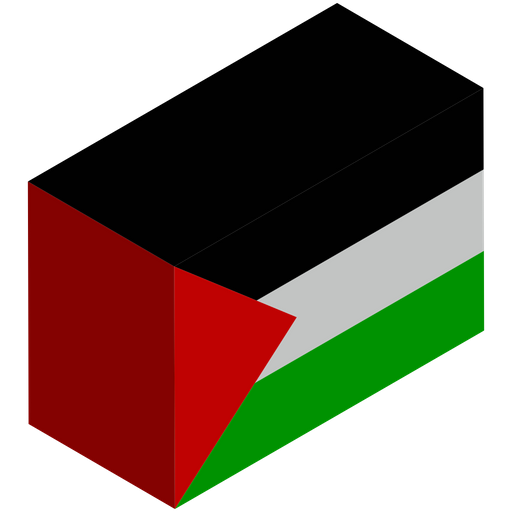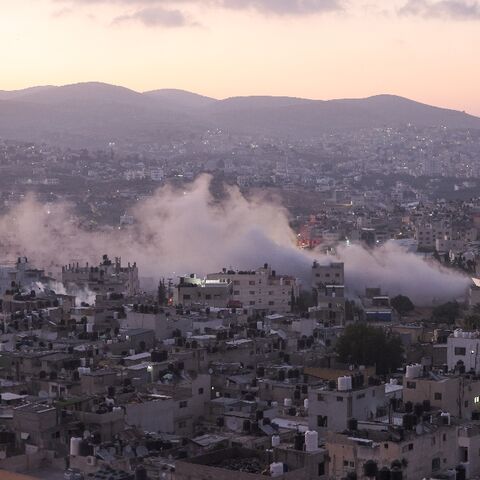KHAN YUNIS, Gaza Strip — Years of successive crises in the besieged Gaza Strip have seemingly reached a boiling point, with Gazans erupting in anger against the Hamas movement in the last two weeks.
Thousands of Palestinians took to the streets last Sunday and again this Friday in various areas of the Gaza Strip in rare public protests against Hamas, which has ruled the enclave since 2006.
Masses gathered in Gaza City, Nuseirat, Khan Yunis, the Jabaliya refugee camp, Rafah, Bani Suheila and Shujaiya. The protesters chanted, “Hamas leave us be,” “We want to live,” and “The people want the fall of the regime.” The protests are politically, economically and socially driven, as living conditions and power outages in Gaza have become unbearable.
In some areas, protesters also called for ending the Palestinian division, repeating slogans such as, “The people want the end of division” and “Abbas and Haniyeh, the people are the victims,” referring to Palestinian Authority (PA) President Mahmoud Abbas and Hamas leader Ismail Haniyeh.
" حلي عنا يا حماس "
— Shaker Ajlan (@ShakerAjlan) July 30, 2023
من هتافات الجماهير الفلسطينية التي خرجت في كافة ميادين غزة بسبب الأوضاع الإقتصادية الصعبة . حرية#بدنا_نعيش #غزة_تنتفض pic.twitter.com/GaZXsXYRzt
The protests came in response to calls by activists on social media, which grew stronger as the electricity crisis worsened in the past month, with Gazans barely getting five hours of power daily amid a scorching heat wave.
Hamas’ security forces cracked down on the peaceful protesters and assaulted several people with batons. Dozens of protesters were injured and many had to be hospitalized. One was wounded by a live bullet on the Abu al-Jedian square in north Gaza.
The Gaza Strip has been under a tight Israeli blockade since 2007, which has destroyed the economy and worsened living conditions for the 2.2 million people living in the coastal territory.
According to recent estimates by the UN, the food insecurity rate in Gaza stands at around 63%, while poverty rates reached 65% in 2022. Meanwhile, 45% of the Gaza population is unemployed, with youth unemployment rates reaching 73.9%, according to 2022 data by the Palestinian Central Bureau of Statistics.
The difficult living conditions have also left a toll on mental health. The UN Office for the Coordination of Humanitarian Affairs (OCHA) said in a 2022 report that one third of Gaza’s population is in need of mental health services and psychosocial support.
Aside from Israel's blockade of Gaza, many protesters believe that Hamas’ mismanagement also played a big part in the deterioration of economic conditions.
Ramy, a demonstrator who was hit in the shoulder with a baton while protesting in Bani Suheila town, told Al-Monitor, “They [Hamas’ security forces] barbarically attacked us even though the protests were completely peaceful. ... They don’t care. They don’t even pretend to care about us.”
“Their [Hamas’] leaders ruined Gaza beyond hope and turned it into a place of misery, and yet they live luxurious lifestyles," added Ramy, who refused to reveal his full name.
Fadi, another young demonstrator in Bani Suheila, told Al-Monitor, “Years of our lives are being wasted. We’re suffering. We can’t find work, we can't make any money, we can’t get married, we can’t put food on the table. We can’t do anything in Gaza.”
Ahmed Hasan, who was also part of the protests in Bani Suheila, told Al-Monitor, “To this day, Hamas leaders don’t act like they’re the rulers of Gaza. ... They’re lazy, corrupt, careless and inhumane,”
Among the protesters’ demands is also for Hamas to allow municipal elections in the Gaza Strip.
Hamas' power grab
Since Hamas’ rise to power in 2007, the Islamist movement has banned all forms of elections, including general, municipal, chambers of commerce, and even university students’ council elections. Hamas fills those positions from its own ranks and allies without any electoral process.
Hamas has launched an arrest campaign against citizens who took part in the protest. Last Sunday, Hamas’ security forces stormed Abu Youssef Al-Najjar Hospital in Rafah governorate, and took three patients who were being treated for injuries sustained during the protests. They were eventually released.
The Islamist movement also assaulted journalists and prevented them from covering the protests. Most notably, Palestine TV reporter Walid Abdel Rahman was attacked while filming the demonstrations in the Jabaliya camp in the northern Gaza Strip.
عناصر الامن الداخلي التابع لحماس وجماعة حماس بلباس مدني نزلو يعتدو عناس الي طالعة بدها تعيش وكلنا شايفين الراية الي بايدو الراية النجسة تبعتهم طالعين يسكتو الناس باي طريقة بس لانهم بدهم يعيشو ...#بدنا_نعيش#ثورة_٣٠_٧ pic.twitter.com/EzR03H19dc
— ⚛️crazy (@oviovoi) July 30, 2023
Abdel Rahman told the local Wafa news agency that he was attacked by individuals who identified themselves as members of the Internal Security of Hamas. But protesters surrounded the reporter and stopped the forces from further beating him and from arresting him.
The Palestinian Journalists Syndicate condemned the attack. “Assaulting and preventing journalists from carrying out their work and covering the peaceful marches in several places in the Gaza Strip is a flagrant violation of the freedom of journalistic work,” the syndicate said in a press statement, which also called on human rights organizations to intervene.
Although rare, these are not the first anti-Hamas protests in Gaza. In March of 2019, similar demonstrations under the same slogan, “We Want to Live,” lasted for four days.
Although the protests and the growing popular anger against Hamas are significant, they will not lead to any tangible results, according to Muhammad Shehada, a Palestinian political analyst who writes for several papers.
Hamas always responds by cracking down severely, Shehada told Al-Monitor, and more importantly, "the main culprit behind Gaza’s suffering remains the 16-year-old Israeli blockade,” he added.
One of the groups advocating for the “We Want to Live” movement released a statement following the protests on Sunday, that read , “The time of silence over injustice and the exploitation of religion for oppression is over.”
Despite the crackdown, activists on social media continue to call for new protests. Another wave of demonstrations is taking to the streets this weekend.

0305.jpg)






